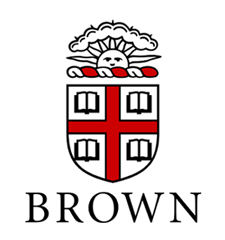Biographical note
Willard Maas, a native of California born on June 24, 1906, was a poet, experimental filmmaker, editor and teacher. He attended San Jose College and the University of California before heading east to New York City, around 1934, where he continued to work on his poetry.
In 1937, Maas married New York abstract artist and filmmaker Marie Menken with whom he collaborated on several of his films. Their marriage, often characterized as turbulent and combative, was fraught with a number of conflicts, including issues surrounding Menken's miscarriage for which they blamed each other. Yet they remained married for the rest of their lives and forged an enduring legacy in the world of experimental filmmaking. They were also well-known for their salons, which gathered together many well-known and like-minded artists, writers, filmmakers, and intellectuals of that era. In the mid-1940s, they established a film collective known as The Gryphon Group, which remained active until late 1960s and played a role in the production of films by Maas, Menken and others, including Ben Moore, Charles Boultenhouse, John Hawkins, and Charles Henri Ford. Its lists of associates and collaborators included filmakers Gregory Markopoulos, Stan Brakhage, Norman McLaren, Maya Deren, Kenneth Anger, and Andy Warhol, composer Ben Weber, and the British poet, George Barker.
Maas, who was bisexual and openly engaged in affairs with men, created films which often explored homoerotic themes. They are recognized for their pioneering queer aesthetic by many contemporary academics, and continue to inspire contemporary filmakers and artists. His most noteworthy films include Geography of the Body (1943), Image in the Snow (1943-48), the Mechanics of Love (1955), and Narcissus (1956).
Maas joined the English faculty at Wagner College in 1958. Shortly after, in 1959, he served as faculty advisor of the college’s literary journal, which was then called Nimbus, but renamed by Maas the Wagner Literary Magazine. He launched the newly-titled magazine by featuring a symposium on the Beats, in which Allen Ginsberg, Gregory Corso, and Peter Orlovsky respond to commentary about Beat poetry from well-known writers and intellectuals, including Marianne Moore, Herbert Read, Philp Rahv, Paul Tillich, Lionel Trilling, Robert Lowell, W C Williams, Norman Mailer, e.e. cummings, and Edmund Wilson. He also was an organizer of the New York City Writer's Conference at the college and co-edited an anthology of prose, The Essential Prose, published by Bobbs-Merrill Co. in 1965.
In addition to his films, Maas also published two books of poetry, Fire Testament (1935) and Concerning the Young (1938). Many of his poems were also published in leading American periodicals and anthologies.
He died on January 2, 1971, just four days after the death of Menken.
Sources: Wikipedia, viewed on August 30, 2016 (https://en.wikipedia.org/wiki/Willard_Maas, https://en.wikipedia.org/wiki/Marie_Menken) ; and Myth, Matter, Queerness: the Cinema of Willard Maas, Marie Menken, and the Gryphon Group, 1943-1969 (http://www.mitpressjournals.org/doi/pdf/10.1162/grey.2009.1.36.58)


